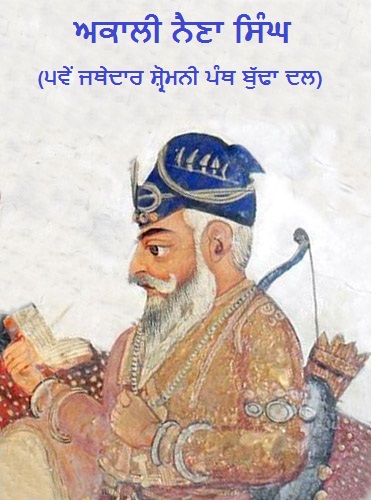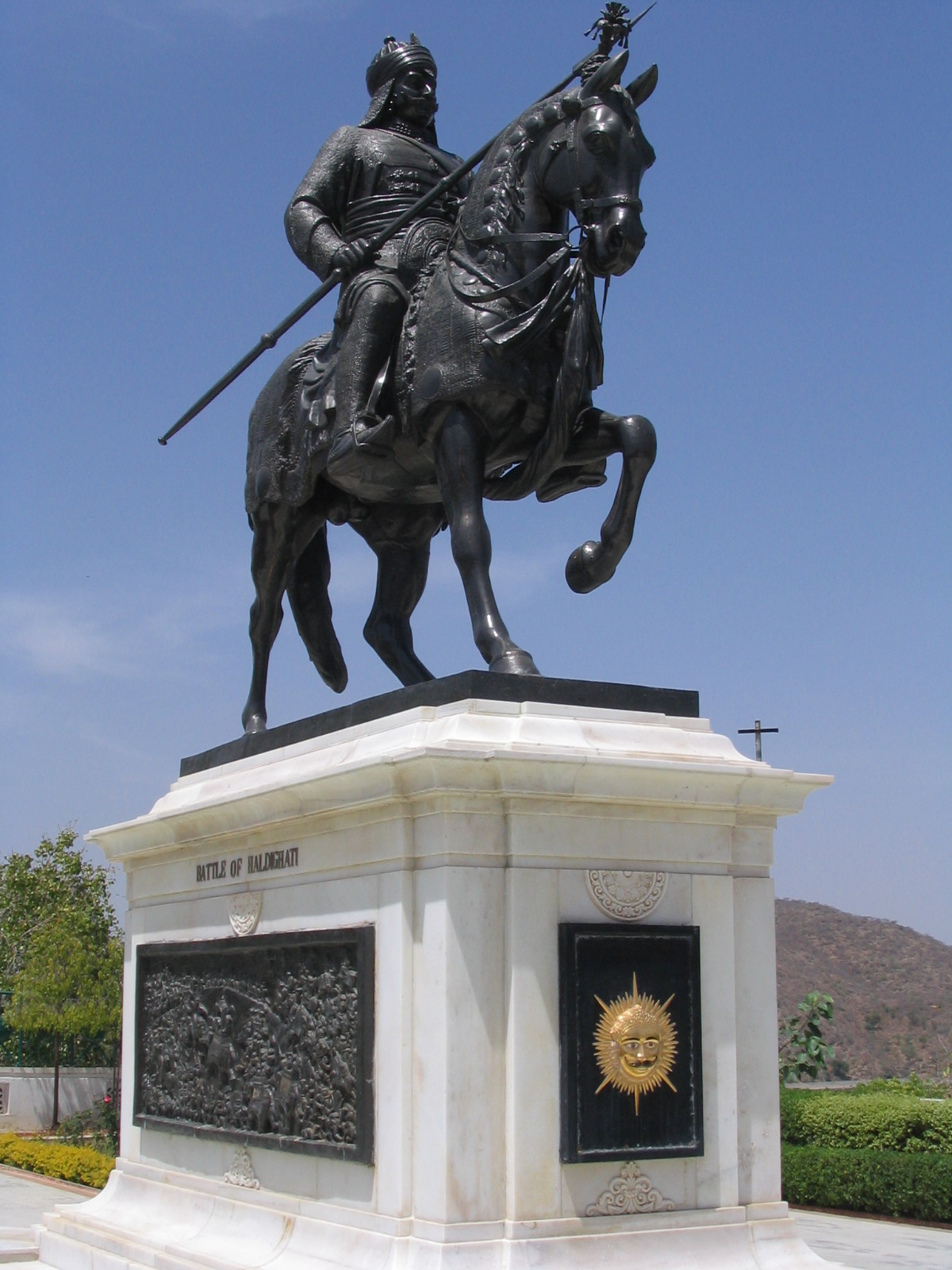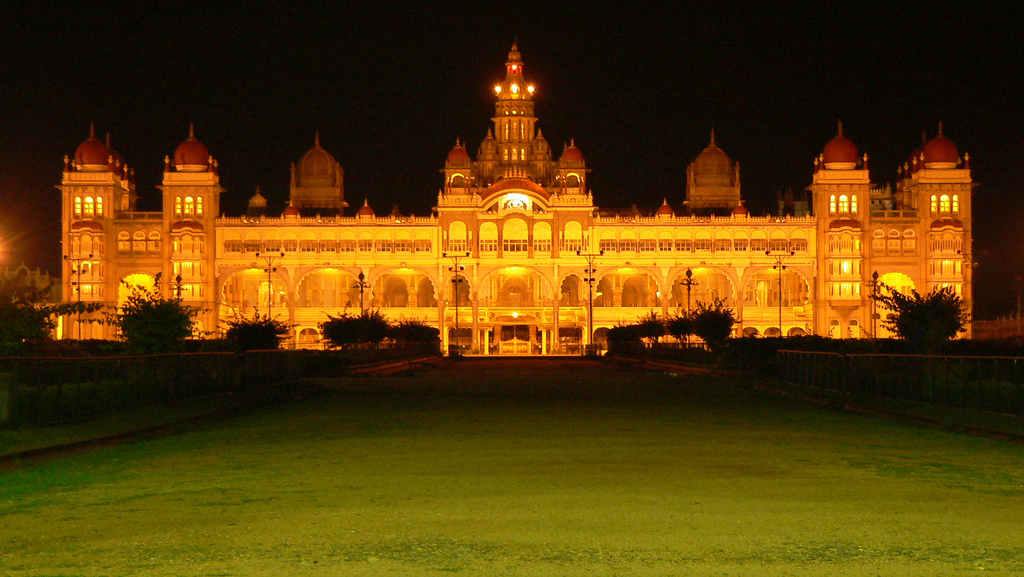|
Khanda (sword)
The khanda ( sa, खड्ग) is a double-edge straight sword originating from the Indian subcontinent. The Maratha warrior clans venerated the khanda as a weapon of great prestige. It is often featured in religious iconography, theatre and art depicting the ancient history of India. It is a common weapon in Indian martial arts.M. L. K. Murty (2003), p91 Khanda often appears in the Sikh, Jain, Buddhist and Hindu scriptures and art. Etymology The word ''khanda'' has its origins in the Sanskrit 'Rocky Pendergrass, 201Mythological Swords Page 10. (खड्ग) or ', from a root ' meaning "to break, divide, cut, destroy". The older word for a bladed weapon, ', is used in the Rigveda in reference to either an early form of the sword or to a sacrificial knife or dagger to be used in war. Appearance The blade broadens from the hilt to the point, which is usually quite blunt. While both edges are sharp, one side usually has a strengthening plate along most of its length, which both a ... [...More Info...] [...Related Items...] OR: [Wikipedia] [Google] [Baidu] |
Indian Subcontinent
The Indian subcontinent is a list of the physiographic regions of the world, physiographical region in United Nations geoscheme for Asia#Southern Asia, Southern Asia. It is situated on the Indian Plate, projecting southwards into the Indian Ocean from the Himalayas. Geopolitically, it includes the countries of Bangladesh, Bhutan, India, Maldives, Nepal, Pakistan, and Sri Lanka."Indian subcontinent". ''Oxford Dictionary of English, New Oxford Dictionary of English'' () New York: Oxford University Press, 2001; p. 929: "the part of Asia south of the Himalayas which forms a peninsula extending into the Indian Ocean, between the Arabian Sea and the Bay of Bengal. Historically forming the whole territory of Greater India, the region is now divided into three countries named Bangladesh, India and Pakistan." The terms ''Indian subcontinent'' and ''South Asia'' are often used interchangeably to denote the region, although the geopolitical term of South Asia frequently includes Afghanist ... [...More Info...] [...Related Items...] OR: [Wikipedia] [Google] [Baidu] |
Murti
In the Hindu tradition, a ''murti'' ( sa, मूर्ति, mūrti, ) is a devotional image such as a statue, or "idol" (a common and non-pejorative term in Indian English), of a deity or saint. In Hindu temples, it is a symbolic icon. Thus, not all Hindu images of gods and saints are ''murti'', for example, purely decorative sculptures in temples and on the streets. A ''murti'' is itself not a god in Hinduism, but it is a shape, embodiment, or manifestation of a deity. ''Murti'' are also found in some nontheistic Jain traditions, where they serve as symbols of revered mortals inside Jain temples, and are worshiped in ''murtipujaka'' rituals. A ''murti'' is typically made by carving stone, wood working, metal casting or through pottery. Ancient era texts describing their proper proportions, positions and gestures include the Puranas, Agamas, and Samhitas.Klaus Klostermaier (2010), ''A Survey of Hinduism'', State University of New York Press, , pages 264–267 The expressio ... [...More Info...] [...Related Items...] OR: [Wikipedia] [Google] [Baidu] |
Sikh Khalsa Army
The Sikh Khalsa Army (), also known as Khalsaji or simply Sikh Army, was the military force of the Sikh Empire. With its roots in the Khalsa founded by Guru Gobind Singh, the army was later modernised on Franco-British principles by Maharaja Ranjit Singh.''The Sikh Army 1799–1849'' By Ian Heath, Michael Perry It was divided in three wings: the Fauj-i-Khas (elites), Fauj-i-Ain (regular force) and Fauj-i-Be Qawaid (irregulars). Due to the lifelong efforts of the Maharaja and his European officers, it gradually became a prominent fighting force of Asia.''History of the Punjab'' by Prof Manjeet Singh Sodhi ) Ranjit Singh changed and improved the training and organisation of his army. He reorganized responsibility and set performance standards in logistical efficiency in troop deployment, manoeuvre, and marksmanship. He reformed the staffing to emphasize steady fire over cavalry and guerrilla warfare, improved the equipment and methods of war. The military system of Ranjit Singh c ... [...More Info...] [...Related Items...] OR: [Wikipedia] [Google] [Baidu] |
Akali Phula Singh
Akali Phula Singh Nihang (born Nihang Singh; 1 January 1761 – 14 March 1823) was an Akali Nihang Sikh leader. He was a saint soldier of the Khalsa Shaheedan Misl and head of the Budha Dal in the early 19th century. He was also a senior general in the Sikh Khalsa Army and commander of the irregular Nihang of the army. He played a role in uniting Sikh misls in Amritsar. He was not afraid of the British who at many times ordered for his arrest but were not successful. During his later years he served for the Sikh Empire as a direct adviser to Maharaja Ranjit Singh. He remained an army general in many famous Sikh battles up until his martyrdom in the battle of Nowshera. He was admired by the local people and had a great influence over the land and his settlement was always open to help the poor and helpless. He was well known and was a humble unique leader and prestigious warrior with high character. He was also known for his effort to maintain the values of ''Gurmat'' and ... [...More Info...] [...Related Items...] OR: [Wikipedia] [Google] [Baidu] |
Baba Deep Singh
Baba Deep Singh (26 January 1682 – 13 November 1757) is revered among Sikhs as one of the most hallowed martyrs in Sikhism. He is remembered for his sacrifice and devotion to the teachings of the Sikh Gurus. Baba Deep Singh was the first head of Misl Shaheedan Tarna Dal – an order of the Khalsa military established by Nawab Kapur Singh, the then head of Sharomani Panth Akali Buddha Dal. The Damdami Taksal also state that he was the first head of their order.Damdami Taksal opens shop to provide religious literature Daily Excelsior.com Early life Baba Deep Singh Ji was born on 26 January 1682 to his father Bhagta, and his mother Jioni. He lived in the village of Pahuwind in |
Nihang
The Nihang or Akali (lit. "the immortals") is an armed Sikh warrior order originating in the Indian subcontinent. Nihang are believed to have originated either from Fateh Singh and the attire he wore or from the "Akali" (lit. Army of the Immortal) started by Guru Hargobind. Early Sikh military history was dominated by the Nihang, known for their victories where they were heavily outnumbered. Traditionally known for their bravery and ruthlessness in the battlefield, the Nihang once formed the irregular guerrilla squads of the armed forces of the Sikh Empire, the Sikh Khalsa Army. Akali The ''word Akali/akaali'' means timeless or immortal. Literally, one who belongs to ''Akaal'' (beyond Time). In other words, an Akaali is that person who is subject of none but God only. Conceptually speaking, the terms Akaali, Khalsa and Sikh are synonymous. The term Akaali was first used during the time of Guru Gobind Singh Sahib. The term Akaali became popular in the last decades of the eig ... [...More Info...] [...Related Items...] OR: [Wikipedia] [Google] [Baidu] |
Sikh
Sikhs ( or ; pa, ਸਿੱਖ, ' ) are people who adhere to Sikhism, Sikhism (Sikhi), a Monotheism, monotheistic religion that originated in the late 15th century in the Punjab region of the Indian subcontinent, based on the revelation of Guru Nanak. The term ''Sikh'' has its origin in the word ' (), meaning 'disciple' or 'student'. Male Sikhs generally have ''Singh'' ('lion'/'tiger') as their last name, though not all Singhs are necessarily Sikhs; likewise, female Sikhs have ''Kaur'' ('princess') as their last name. These unique last names were given by the Gurus to allow Sikhs to stand out and also as an act of defiance to India's caste system, which the Gurus were always against. Sikhs strongly believe in the idea of "Sarbat Da Bhala" - "Welfare of all" and are often seen on the frontline to provide humanitarian aid across the world. Sikhs who have undergone the ''Amrit Sanchar'' ('baptism by Khanda (Sikh symbol), Khanda'), an initiation ceremony, are from the day of thei ... [...More Info...] [...Related Items...] OR: [Wikipedia] [Google] [Baidu] |
Wazir Khan (Rampur)
Ustad Mohammad Wazir Khan (1860-1926) served as the head of Arbab-e-Nishat (Music Department of Rampur State) during the period of Nawab Hamid Ali Khan of Rampur. He was also an excellent playwright who established the Rampur theatre in the building of club Ghar in Rampur. Early life and background Wazir Khan was born in the former Rampur State to Ameer Khan Beenkar. He was the descendant of Naubat Khan and Hussaini (Tansen's daughter). Besides music, Wazir Khan's interests spanned many fields and areas. He was also a professional playwright, poet, published author, painter, passionate photographer, and a well-practiced calligrapher. Primarily he used to do Calligraphy in Arabic and Persian.In poetry he was the student of Daagh Dehlvi. As a Musicologist he wrote the Risala Mausibi. In addition, Wazir Khan was proficient in many languages, such as Arabic, Persian, Urdu, Hindi, Bangla, Marathi and Gujarati Cuisine All the Naubat Khanis were fond of good food. They were able to ... [...More Info...] [...Related Items...] OR: [Wikipedia] [Google] [Baidu] |
Naubat Khan
Naubat Khan (also known as Ali Khan Karori) was an Indian classical music composer, musician and instrumentalist who was made a Mansabdar by Mughal Emperor Akbar. He is known today for his skills with the ''rudra veena'' or ''bīn'', which he is shown playing in paintings by Mughal court artists.Naubat Khan was the contemporary and son in law of legendary Tansen. Early life and background Naubat Khan was the grandson of Raja Samokhan Singh of Kishangarh. Samokhan Singh, a Jodhpur prince, was himself a great veena player of his time. As the Mughal Emperor Akbar fought his wars of conquest in India, he fought against Raja Samokhan Singh. Singh was defeated in the battle and his grandson Misri Singh (Naubat Khan) was kept under house arrest. Misri Singh later accepted Islam and was named Ali. He was trained under Abdul Rahim Khan-I-Khana, the son of Bairam Khan to get an understanding of the Mughal court procedures. Ali was given the title of Khan by Mughal Emperor Akbar, and the p ... [...More Info...] [...Related Items...] OR: [Wikipedia] [Google] [Baidu] |
Tansen
Tansen ( – 26 April 1589), also referred to and commonly known as Sangeet Samrat () , was a Hindustani classical musician. Born in a Hindu Gaur Brahmin family, he learnt and perfected his art in the northwest region of modern Madhya Pradesh. He began his career and spent most of his adult life in the court and patronage of the Hindu king of Rewa, Raja Ramchandra Singh (r.1555–1592), where Tansen's musical abilities and studies gained widespread fame. This reputation brought him to the attention of the Mughal Emperor Akbar, who sent messengers to Raja Ramchandra Singh, requesting Tansen to join the musicians at the Mughal court. Tansen did not want to go, but Raja Ramchandra Singh encouraged him to gain a wider audience, and sent him along with gifts to Akbar. In 1562, about the age of 60, the Vaishnava musician Tansen joined the Akbar's court, and his performances became a subject of many court historians. Numerous legends have been written about Tansen, mixing facts a ... [...More Info...] [...Related Items...] OR: [Wikipedia] [Google] [Baidu] |
Maharana Pratap
Pratap Singh I, popularly known as Maharana Pratap (c. 9 May 1540 – 19 January 1597), was a king of Mewar from the Sisodia dynasty. Pratap became a folk hero for his military resistance against the expansionism of the Mughal Empire under Akbar through guerrilla warfare which proved inspirational for later rebels against Mughals including Shivaji. Early life and accession Maharana Pratap was born to Udai Singh II of Mewar and Jaiwanta Bai. His younger brothers were Shakti Singh, Vikram Singh and Jagmal Singh. Pratap also had 2 stepsisters: Chand Kanwar and Man Kanwar. He was married to Ajabde Punwar of Bijolia and he had married 10 other women and was survived by 17 sons and 5 daughters including Amar Singh I. He belonged to the Royal Family of Mewar. After the death of Udai Singh in 1572, Rani Dheer Bai wanted her son Jagmal to succeed him but senior courtiers preferred Pratap, as the eldest son, to be their king. The desire of the nobles prevailed. Udai Singh died in ... [...More Info...] [...Related Items...] OR: [Wikipedia] [Google] [Baidu] |
Mysore Dasara
Mysore Dasara is the ''Nadahabba'' (state festival) of the state of Karnataka in India. It is a 10-day festival, starting with nine nights called Navaratri and the last day being Vijayadashami. The festival is observed on the tenth day in the Hindu calendar month of ''Ashvina'', which typically falls in the Gregorian months of September and October. The Hindu festival of Dasara, Navratri and Vijayadashami celebrates the victory of good over evil. It was the day in the Hindu legends when Goddess Durga, Chamundeshwari (Durga) killed the demon Mahishasura. Mahishasura is the demon whose slaying by the Goddess gave the city the name Mysuru. The Mysuru tradition celebrates the warriors and the state fighting for the good during this festival, ritually worshipping and displaying the state sword, weapons, elephants, horses along with Hindu Devi goddess in her warrior form (predominantly) as well as the Vishnu avatar Rama. The ceremonies and a major procession is traditionally presided ... [...More Info...] [...Related Items...] OR: [Wikipedia] [Google] [Baidu] |









